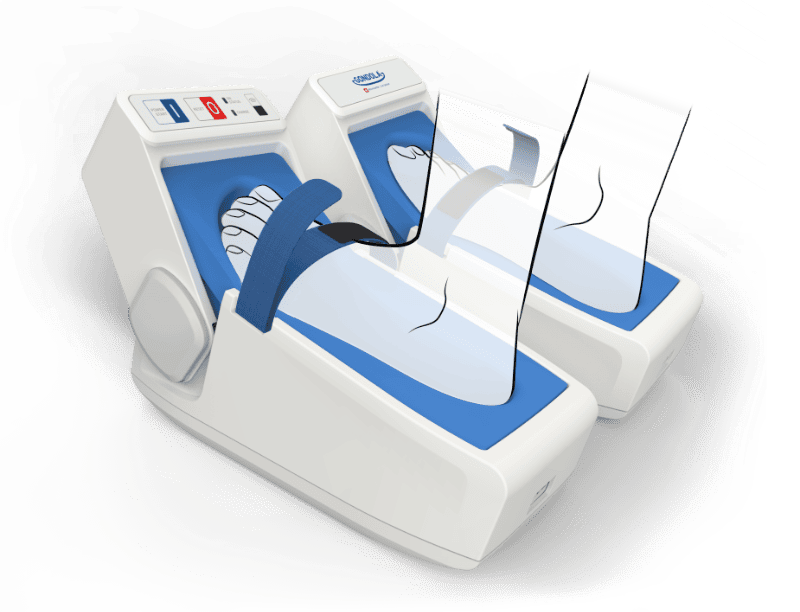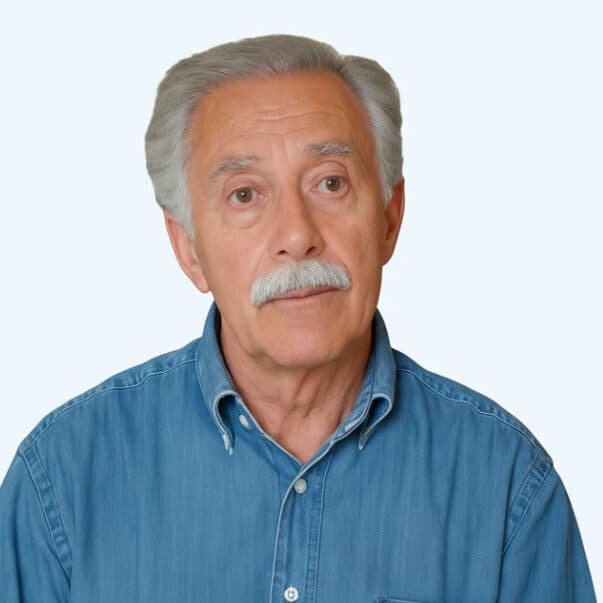Parkinson's takes away your security, Gondola gives you back the freedom
Gondola AMPS therapy stimulates specific points on your feet to reactivate the brain areas that control movement and balance. A mechanical stimulation, precise, non-invasive, which in just 2 minutes increases safety in walking and improve your life and the lives of your loved ones. Gondola AMPS represents a breakthrough in Parkinson's care because of its proven efficacy and innovative approach.
DISCOVER GONDOLA IN 1 MINUTE
Find the serenity, you get immediate benefits.
The Gondola AMPS therapy is designed for regular, ongoing use and is compatible with treatments already underway. It is a 2-minute Parkinson's treatment that applies precise pressures at two specific points on both feet.
This stimulation helps reactivate brain areas involved in gait and balance management. Our Parkinson's treatment is a scientifically validated method, tested on thousands of patients over more than 10 years.
There is a way to live with Parkinson's and lead a fulfilling life despite the disease: you can directly experience the Gondola device at one of our partner centers.

The advantages of Gondola
Gondola represents a major advance in innovative Parkinson's treatments, offering a rapid, noninvasive, and scientifically supported solution for the treatment of motor symptoms caused by Parkinson's disease.
Fast
A 2-minute treatment every 2 days
Immediate improvement
See the immediate effects after treatment
It's not painful
It is a non-invasive and well-tolerated therapy
Gondola changes your life!
You will immediately notice an improvement in walking, balance, and greater stability.
Walk better
Your brain rediscovers how you walked before Parkinson's
Fewer falls, more safety
The risk of losing balance and falling is significantly reduced
Walking feels natural again
You can multitask again, without thinking about every step.
Those who use Gondola have no doubts
There is no better testimonial than those who benefit from Gondola and live a life freer from the restrictions of Parkinson's every day. Innovative Parkinson's therapies like this one help people regain independence and security.
PAOLO'S TESTIMONY
Now I feel better in every way. I'm more erect, I'm more confident when I'm standing or when I have to start walking, I used to have a darned fear of falling, and I've decreased the tower of Pisa effect a lot, especially standing on your table eating. We take nice little walks almost daily with my wife. I mean, it's a major improvement.

Paul
I was looking for solutions for Parkinson's disease and thanks to Gondola I am walking like before. It had been a long time since I had run but the first time I tried Gondola AMPS, Stefano had me running in the study hallways. It was amazing!

Anthony
Gondola in addition to gait, balance, and walking, has also improved me on the level of the other aspects that are underestimated such as psychological and emotional. In addition, those side effects caused by excessive medication have disappeared almost completely because reducing the medication also reduces the side effects.

Lucia
People find it hard to believe I have Parkinson's. I am 68 years old, I was diagnosed with Parkinson's about 12 years ago, in 2005. However, I continued to work until 2014, when the disease started to take over and forced us to close the business. Now that I use Gondola, I feel more at ease.

Ermanno
This is with an expert to verify eligibility for you or a family member

Gondola Medical Technologies Ltd.
Route de la Corniche 4 - 1066 Epalinges, Switzerland

Gondola Medical Technologies is a Swiss MedTech company that has developed Gondola AMPS, a therapy for treating gait and balance disorders caused by Parkinson's.

This project has received funding from the European Union’s Horizon 2020 research and innovation programme under grant agreement No. 836225 and No. 946638.

